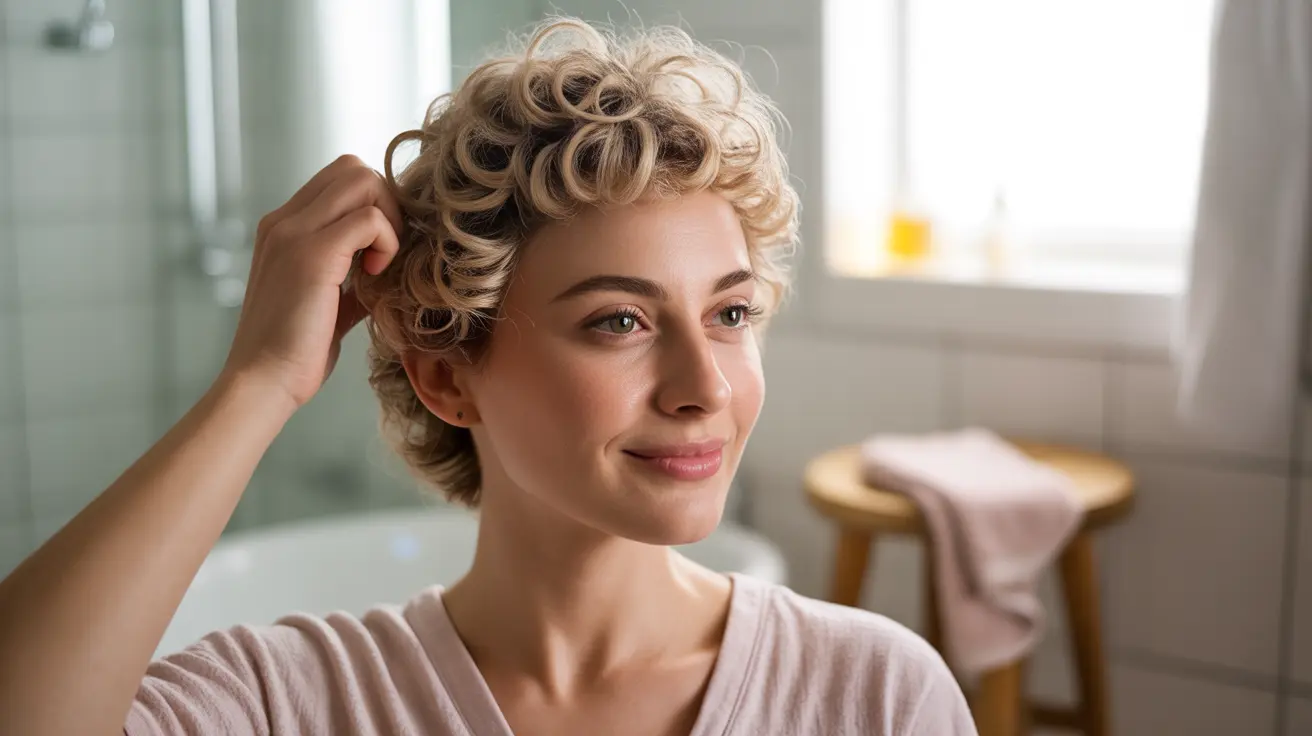After completing chemotherapy treatment, many cancer survivors experience a surprising change in their hair regrowth pattern known as chemo curls. This phenomenon occurs when previously straight hair grows back with unexpected waves or curls following chemotherapy treatment. Understanding this common occurrence can help patients better prepare for and manage their post-treatment hair care journey.
While chemo curls can be unexpected and sometimes challenging to manage, they represent a significant milestone in cancer recovery. This comprehensive guide will explore the causes, duration, and management strategies for dealing with post-chemotherapy hair changes.
What Causes Chemo Curls?
Chemotherapy drugs target rapidly dividing cells in the body, including hair follicles. When hair begins to regrow after treatment, the texture and structure of the hair can be temporarily altered due to changes in the hair follicles' shape and function. These changes affect how the hair shaft develops, often resulting in a curlier or wavier pattern than before treatment.
The scientific explanation involves modifications to the proteins and cellular structures responsible for hair growth. The DNA of hair follicle cells may be temporarily affected, leading to differences in how the hair shaft forms during regrowth.
Timeline of Hair Regrowth After Chemotherapy
Hair regrowth after chemotherapy typically follows a predictable pattern, though individual experiences may vary:
- Weeks 2-3: Fine, soft fuzz begins to appear
- Months 1-2: More substantial hair growth begins
- Months 3-6: Noticeable hair growth with possible texture changes
- Months 6-12: Continued growth and potential texture evolution
Managing Post-Chemo Hair Care
Gentle Hair Care Practices
During the initial regrowth phase, it's essential to treat your new hair with extra care:
- Use sulfate-free, gentle shampoos
- Avoid heat styling when possible
- Pat hair dry with a soft microfiber towel
- Use wide-toothed combs for detangling
- Minimize chemical treatments
Nutritional Support for Healthy Hair Growth
Supporting hair regrowth through proper nutrition can help maintain healthy new growth:
- Consume adequate protein
- Include biotin-rich foods
- Ensure sufficient iron intake
- Stay hydrated
- Consider doctor-approved supplements
Styling Tips for Chemo Curls
Working with your new texture rather than against it can help you feel more confident during the regrowth phase:
- Use curl-defining products
- Try protective hairstyles
- Embrace shorter styles initially
- Consider regular trims to maintain shape
- Use silk or satin pillowcases
Frequently Asked Questions
What causes chemo curls, and how long do they typically last?
Chemo curls are caused by changes in the hair follicle structure due to chemotherapy's effects on rapidly dividing cells. They typically last anywhere from 6-12 months, though some people may experience permanent texture changes.
How can I manage and care for my hair after chemotherapy to prevent damage and promote healthy regrowth?
Focus on gentle hair care practices, use mild products, avoid heat styling, and maintain good nutrition. Regular trims and protective styling can also help maintain hair health during regrowth.
Are chemo curls a sign of successful chemotherapy recovery, or do they indicate other health changes?
Chemo curls are simply a common side effect of hair regrowth after chemotherapy and don't indicate treatment success or failure. They represent normal cellular changes during the recovery process.
Can chemo curls be permanent, or will my hair always go back to its original texture?
While most people's hair eventually returns to its pre-chemotherapy texture within 1-2 years, some individuals may experience permanent changes in their hair texture.
Are there any specific hairstyles or treatments that can help manage chemo curls while they are present?
Protective styles, shorter cuts, and curl-specific hair products can help manage chemo curls. Working with a stylist experienced in post-chemotherapy hair care can provide personalized styling solutions.




